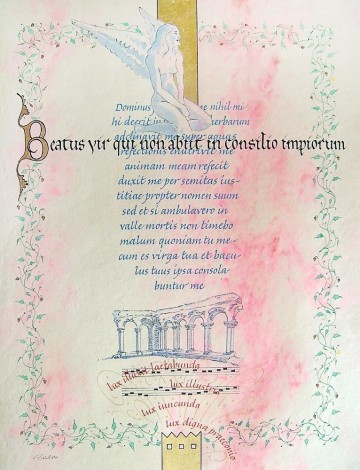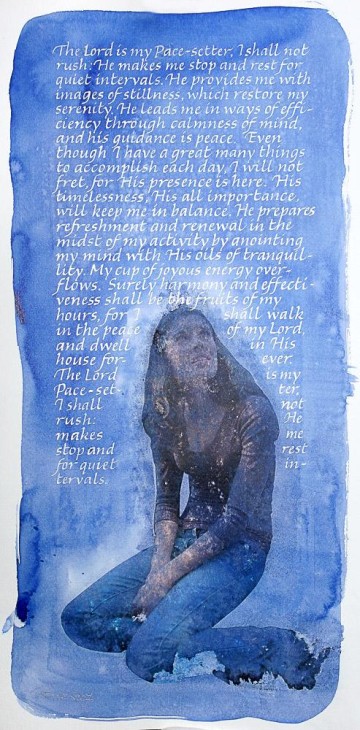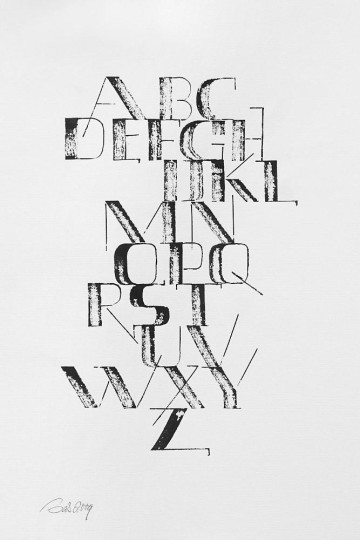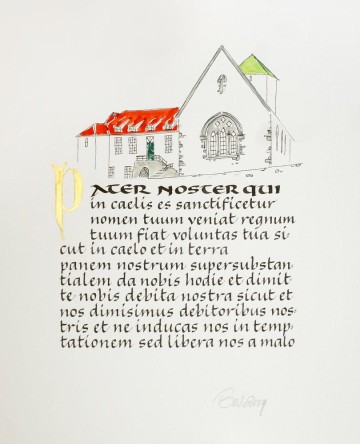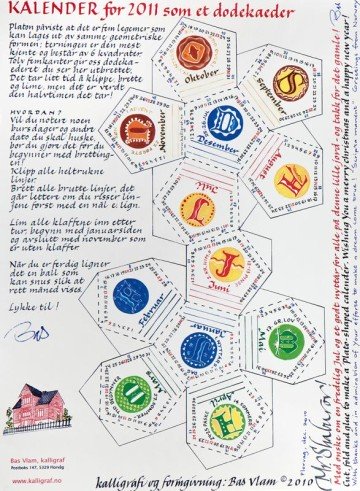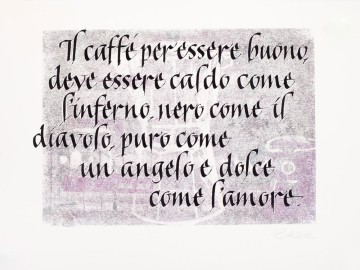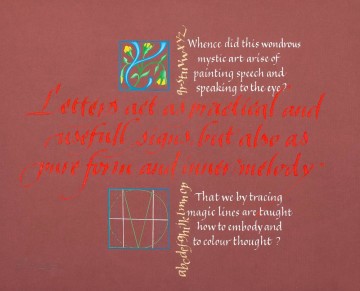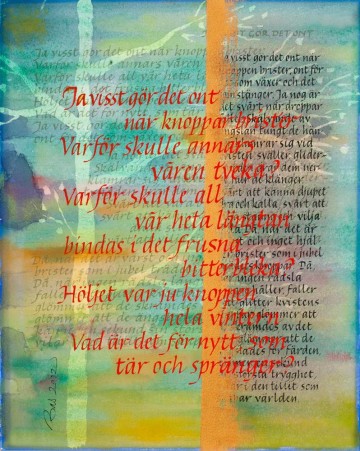Bas Vlam

Bas Vlam
Florveg, Norway
Calligrapher
Notes on calligraphy
To me the art of writing is not just something to do: it is life itself! When I work I lose sense of time and space and find myself at ease and consider me to be a lucky man. If I on top of that can produce something that pleases others as well, life is perfect.
Calligraphers today ofcourse are by the general public considered to be weirdos doing something completely unneccessary; one can write on a computer using all kinds of fonts of which some actually, I admit, are very nice. But the one aspect you can not get from your computer is personality in the writing of letters. (And there is also the point of doing something yourself…)
Therefore I think it is of great importance that we focus on calligraphy not merely as producing letters in an old fashioned way, but as an art, worth doing as it is standing by itself, regardless of the fact that it can also be used to pass on a text.
In Norway writing is not considered a topic that children should learn properly at school and calligraphy even more so, although it is a obligatory part of higher education where it is taught mostly by people without any formal training in the subject or any understanding of its history. At artschools you may find the exceptions to this rule, e.g. in Oslo Christopher Haanes and Helene Jenssen do a proper job, like Ivar Bell used to do back in the old days.
When I came to Norway in 1984 (from my native country the Netherlands) I didn't find calligraphy as much alive as back home. Although at the time not good in letterforms myself, I started teaching with the help of proper example-sheets given by my dutch teacher, Astrid Scholten, whom I had studied with for three years. I realized I had to learn more myself at these classes and went to see Donald Jackson, the queen's scribe, at his place in Wales. From there on I went to Digby (London) and have ever since tried to show people that calligraphy is about the understanding of letterforms, some principals and that it can be very rewarding.
When I realized my former students needed input when not in class, I founded Kalligrafisk klubb and besides our journals we provide books and workshops to our members.
The highlight of our society came when we had Donald Jackson here for two weeks in 1996, like a circle coming round!
Calligraphy in Norway is for most people a hobby producing cards and invitations, maybe the odd poem or a nice envelope.
Personally I like to make work that can surprise people in the sense that if they are atrracted by the colours or image from a distance and come closer, they discover that there is more to be seen. Especially in my resists (a technique I learned from John Woodcock) I try to hide details that make a contribution to the calligraphy itself. Nevertheless, I find it is most essential to aim for good letterforms as the startingpoint of all work and hope for beauty to follow.
Author works
"Beatus Vir" ("Blessed are those who...")
Hand-made paper, Gouache, gold-leaf, nibs and brushes, 40x50 cm, 2010Calendar
Typographical printout, inscription is made by sharp-pointed nib pens, black and red ink, 29x42 cm, 2010Il caffé
Il caffé is a quotation in Italian on how good coffee should be, with an image of famous coffeemakers behind the words.Inks and nibs on Sennelier HP paper, 38x28.5 cm, 2012
Kandinsky
Kandinsky is about lettering and what it means to us.Gouache, leaf gold, nibs and brushes on Fabriano Roma paper, 37.5x30 cm, 2012
Calligraphy is the art of deliberate hieroglyphic corruption and transformation in order to reach natural harmony.
